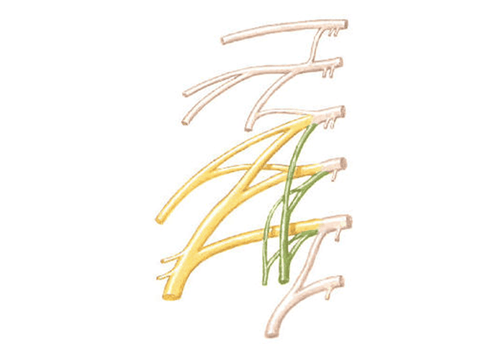This is an automatically translated article.
Ceftriale is an antibiotic of the Cephalosporin group, containing the main ingredient Ceftriaxone, 1 gram, packed in a box of 10 powder vials for solution for injection. The drug is effective in the treatment of infections in the respiratory tract, ear - nose - throat, blood infections, kidney - urogenital organs, prevention of post-operative infections...
1. What is Ceftriale?
Ceftriale contains 1 gram of the main drug Ceftriaxone, in the form of ceftriaxone sodium salt, distributed and manufactured by Korea Prime Pharma Co., Ltd - KOREA. This is a Cephalosporin antibiotic, used for clinical treatment when indicated and prescribed by a doctor.
Pharmaceutical substance Ceftriaxone is a 3rd generation Cephalosporin antibiotic, with a broad spectrum against many Gram-negative bacteria, significant activity on Strep strains. Pneumoniae, Viridans Strep. Ceftriaxone is poorly absorbed from the gastrointestinal tract, clinically only for injection (deep intramuscular injection, slow intravenous infusion). After entering the body, the drug is rapidly and widely distributed into the interstitial fluid and body tissues, and the effective concentration of the drug is maintained for 24 hours. The drug penetrates into tissues and interstitial fluid such as in the heart, lungs, biliary tract, tonsillar pharynx, liver, bones, middle ear and nasal mucosa, pleura, prostate gland, synovial fluid, well distributed into the cerebrospinal fluid. , especially when the meninges are inflamed. Ceftriaxone crosses the placenta and passes into breast milk. Thanks to a rich system of enzymes, the liver is the main organ of metabolism of Ceftriale, and the drug is eliminated by physiological filtration in the kidneys.
2. Indications and contraindications of the drug Ceftriale
2.1. Indications for Ceftriale Drug Ceftriale is used in the following cases:
Severe infections, previously resistant to 1st and 2nd generation Cephalosporins, infections in patients with reduced resistance. Respiratory tract infections, ear - nose - throat areas: otitis, tonsillitis, bronchiolitis, severe infections such as pneumonia, otitis media ... Treatment of infections in the kidneys, urinary organs genital: pyelonephritis, cervicitis, gonorrhea, cystitis... Treatment of blood infections, purulent meningitis, brain abscess, endocarditis. Infections of bones, joints, skin, wounds and soft tissues: Bacterial dermatitis, impetigo, boils, septic arthritis, open wounds in the skin... Intra-abdominal infections: Peritonitis, infection gastrointestinal infections, cholecystitis, cholangitis... Prophylaxis of post-operative infections when patients have prior surgery indications. 2.2. Contraindications Ceftriale Do not use Ceftriale in cases where the patient has a history of allergy or hypersensitivity reaction to Ceftriaxone, Cephalosporins, Penicillins or excipients contained in the drug.
Pregnant women, premature infants, and nursing mothers should not use the drug.
3. Dosage and how to use Ceftriale
How to use: Ceftriale is used intramuscularly or intravenously. Should be injected deep intramuscularly in the buttocks or frontal muscles outside the thigh area, should be administered slowly as prescribed by the doctor.
Dosage: The dosage of Ceftriale is specifically prescribed by a doctor or the patient can refer to the manufacturer as follows:
Adults and children over 12 years old: The dose is usually 1g to 2g per day. In severe cases, the dose can be increased to 4g. Infants 15 days old to 12 years old: Dosage is calculated according to the formula 20 - 80mg/kg total dose in 1 day. Newborns under 14 days old: The dose is calculated according to the formula from 20-50mg/kg total dose in 1 day. Meningitis: The dose is calculated according to the formula 100mg/kg, used once a day. The maximum injection dose is 4g. Gonorrhea: A single intramuscular dose of 250mg once. Prophylaxis before surgery: The dose is from 1g to 2g, the injection time is from 30 to 90 minutes before the surgery.
4. Undesirable effects of the drug Ceftriale
In the process of using the drug, the patient may experience some unwanted effects. It is recommended that the patient immediately notify the treating doctor for timely treatment.
Undesirable effects that patients taking Ceftriale may experience such as: hypersensitivity reactions on the skin, jaundice, elevated liver enzymes, symptoms of acute renal failure, severe colitis, interstitial pneumonia, may experience a shock reaction.
5. Notes when using Ceftriale
Patients should note the following issues when using Ceftriale:
Patients need to inform their doctor if there is a history of drug allergies, the drugs being used to be prescribed appropriately. No dose adjustment is necessary in patients with renal impairment. But in case of severe renal failure, creatinine clearance less than 10ml/min, the drug should be used with caution, not more than 2g in 1 day. Ceftriaxone is a substance that is not eliminated during peritoneal dialysis or hemodialysis, and there is no need to supplement the dose of ceftriaxone after the patient is on peritoneal dialysis. People who need to focus on driving, participating in traffic, and operating machinery can feel secure when using Ceftriale. Above is information about the drug Ceftriale. This is an antibiotic, prescribed in the indications of infection or prophylaxis after surgery. To be safe when using the drug and limit side effects, patients need to follow the doctor's instructions, absolutely do not self-treat at home.













